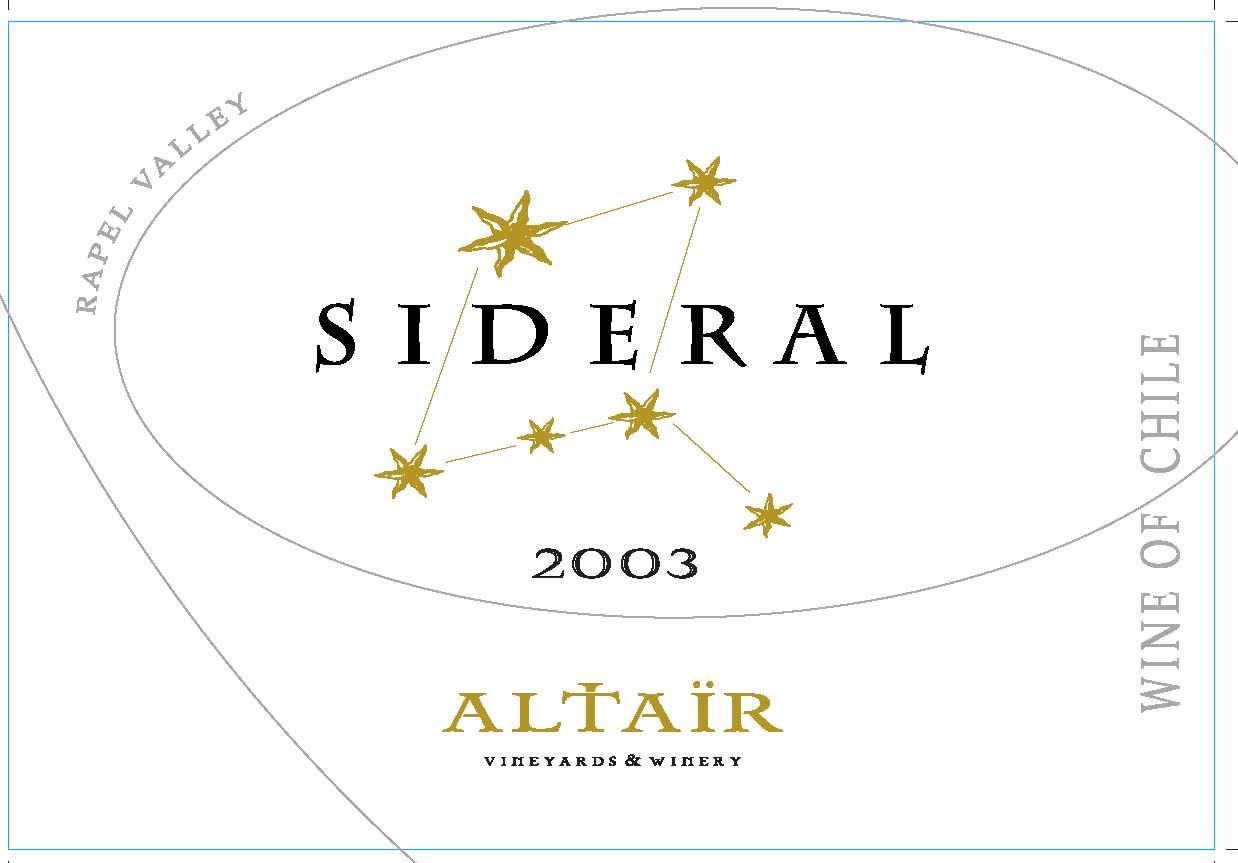2003 Rapel Valley Cabernet Sauvignon 84%, Merlot 10%, Syrah 4%, Sangiovesse 2%
The Altair Sideral is a captivating red wine showcasing a blend of Cabernet Sauvignon, Merlot, Syrah, and Sangiovese from the esteemed Rapel Valley. This vintage from 2003 unfolds with a rich ruby hue, inviting you to explore its depth. On the palate, it offers a harmonious composition where the Cabernet Sauvignon's structure meets the Merlot's softness, creating a delightful balance. The subtle influence of Syrah adds a layer of dark fruit and spice, while Sangiovese contributes bright acidity and finesse. This wine exhibits a pronounced fruit intensity, complemented by firm tannins that provide a satisfying grip. With its well-integrated character, the Altair Sideral truly reflects the unique terroir of the Rapel Valley, promising an elegant experience for the discerning palate.
The Altair Sideral is a captivating red wine showcasing a blend of Cabernet Sauvignon, Merlot, Syrah, and Sangiovese from the esteemed Rapel Valley. This vintage from 2003 unfolds with a rich ruby hue, inviting you to explore its depth. On the palate, it offers a harmonious composition where the Cabernet Sauvignon's structure meets the Merlot's softness, creating a delightful balance. The subtle influence of Syrah adds a layer of dark fruit and spice, while Sangiovese contributes bright acidity and finesse. This wine exhibits a pronounced fruit intensity, complemented by firm tannins that provide a satisfying grip. With its well-integrated character, the Altair Sideral truly reflects the unique terroir of the Rapel Valley, promising an elegant experience for the discerning palate.




